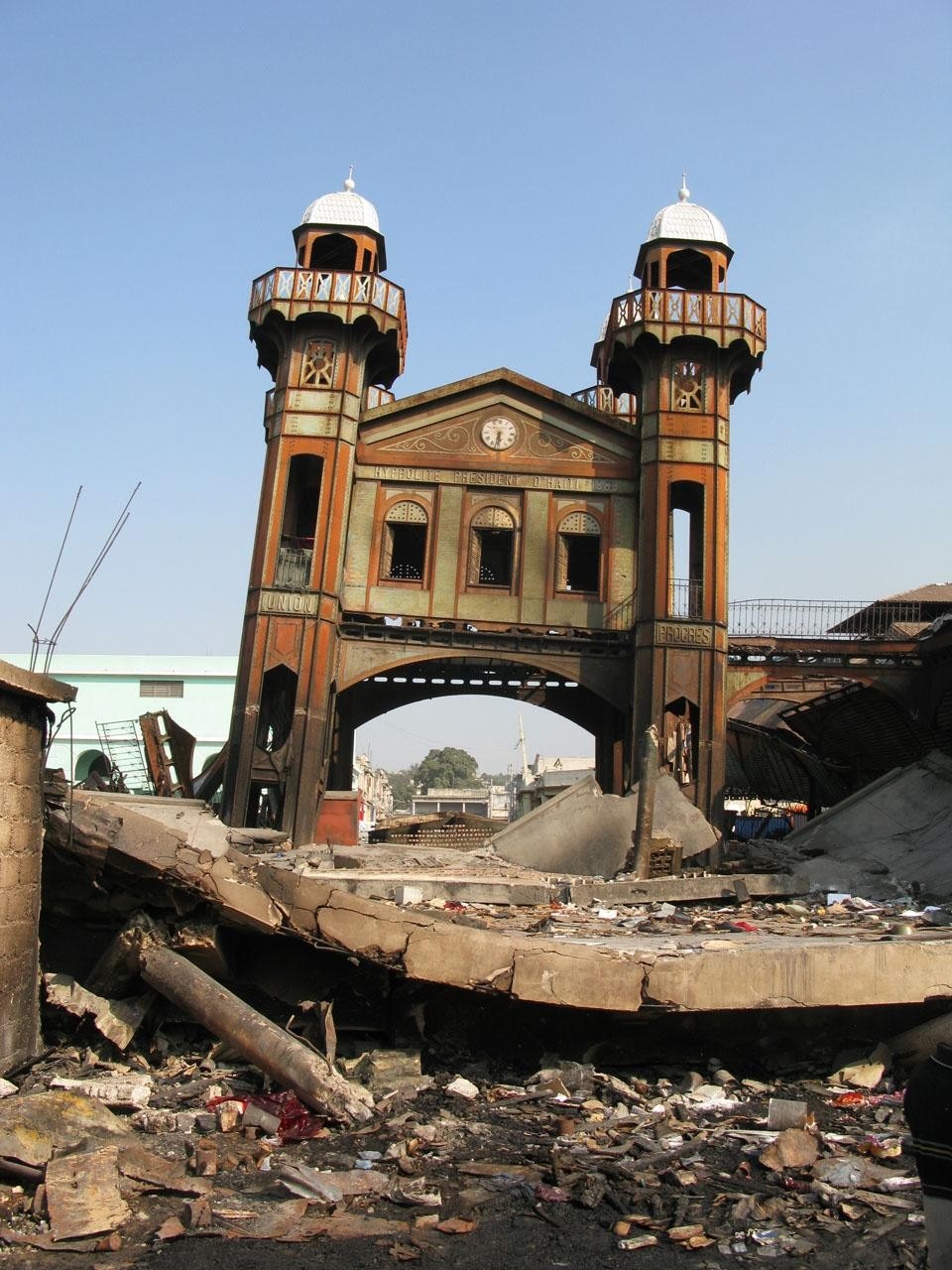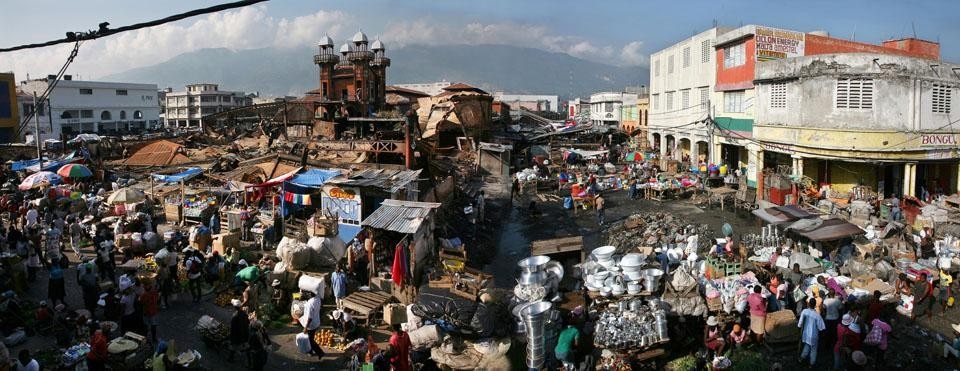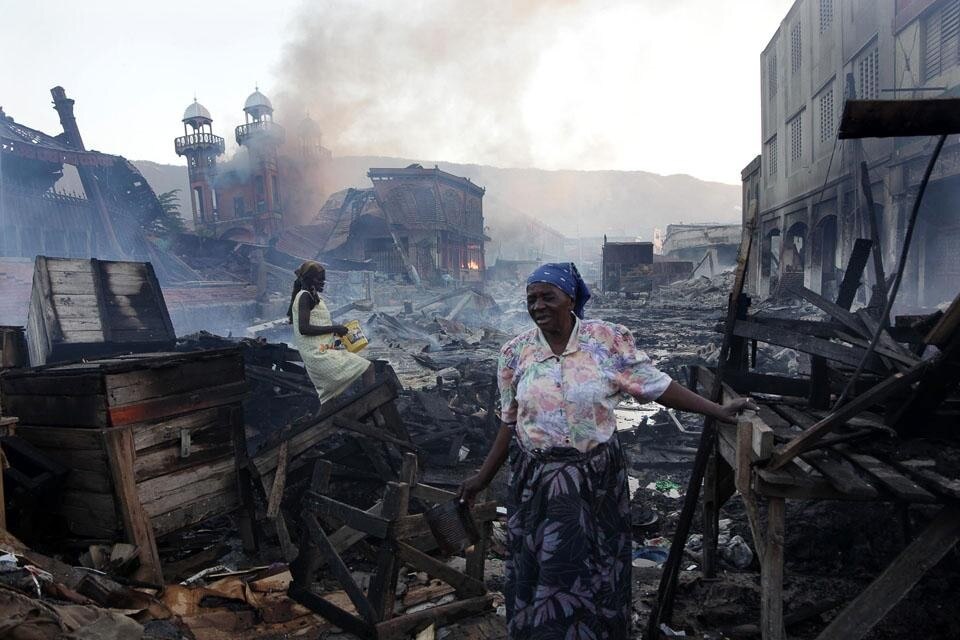According to legend, the building, which was made in Paris was originally intended to be a railway station and was flat-packed and headed for Cairo. Nobody knows how or why it ended up in Haiti, but it was warmly welcomed. The many tokens of nostalgia that surround the building include its prime position on the front of Haiti's 1,000 gourde bank note.
London-based architect John McAslan + Partners (JMP) was commissioned to take on the restoration of the overtly colonial, Muslim-influenced market. JMP became involved with Haiti two years ago, following his firm's voluntary work in Malawi with the Clinton Global Initiative (CGI), the former US president's foundation. The project was funded by the Irish billionaire Denis O'Brien of Digicel, which runs the Haitian mobile phone industry and is one of Haiti's largest employers.
_UPD1.jpg.foto.rmedium.jpg)

Anyone born in Port-au-Prince, who has shopped in Port-au-Prince, they all have a story, a memory, from the market


Local metalworkers also repaired all the historic elements of the south market and research into the original design informed a bright red and green colour scheme that was used to decorate the project throughout.
_UPD1.jpg.foto.rmedium.jpg)
Today, John McAslan + Partners has a strong reputation for delivering new-build architecture, and giving vibrant and sustainable life to old and historic buildings through adaptive interventions. The practice was declared World Architect of the Year and Transport Architect of the Year for 2009 by Building Design and won Architect of the Year at the 2009 Roses Design Awards. It regularly wins RIBA Building of the Year awards, and was named as AJ's Architectural Practice of the Year on a number of occasions. The practice's work is widely published and its experts in every sector are frequently sought out for speaking engagements and topical comment in the media.


_UPD3.jpg.foto.rmedium.jpg)